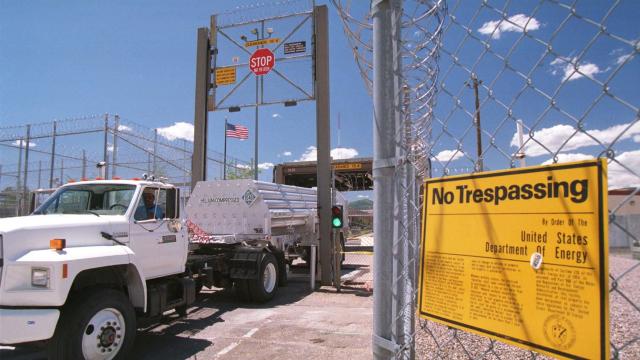Authorities at the Los Alamos National Laboratory, the birthplace of the nuclear bomb and now one of the largest multidisciplinary scientific institutions in the world, is warning would-be aerial trespassers that it would be relatively trivial for them to shoot down any drones flying on its territory.
According to the Associated Press, officials at the lab issued a warning on Monday that Los Alamos is totally off-limits to unmanned aerial vehicles — something that’s been the case for years, but apparently warranted a reminder. In a statement, the senior director of lab security, Unica Viramontes, said that the facility is more than capable of defending itself against unknown aircraft.
“We can detect and track a UAS (unmanned aircraft system), and if it poses a threat, we have the ability to disrupt control of the system, seize or exercise control, confiscate or use reasonable force to disable, damage or destroy the UAS,” Viramontes told the AP.
The AP added that lab officials wouldn’t clarify what might have prompted the warning, nor did they divulge the number of unauthorised aircraft Los Alamos security personnel may have detected in recent months. They also wouldn’t tell the news agency any specifics about what the laboratory refers to as its Counter Unmanned Aircraft Systems (CUAS).
In 2018, police in Texas used a system called DroneShield to protect NASCAR events. DroneShield relies on radio jammers, including a portable version called DroneGun that looks like a sci-fi rifle, to forcibly disconnect a drone from its operator. That either forces the offending drone to fall back onto a backup protocol, like landing at the last known coordinates of the operator or the nearest safe location, or it simply knocks it out of the sky.
The U.S. Federal Communications Commission has warned that use of radio jamming technology without federal authorization is illegal, potentially making the use at NASCAR events by state and local authorities in Texas questionable. However, Los Alamos National Laboratory is run by the Department of Energy and falls within federally protected airspace. It’s also a Federal Aviation Administration (FAA) no-drone zone as a site with Category I Special Nuclear Materials and has no such compunctions about employing similar technology.
In 2018, according to Defence Daily, the National Nuclear Security Administration announced the laboratory would be installing a commercially developed system to “detect, identify, track and intercept unsanctioned and suspicious drones” in coordination with the FAA, though it didn’t disclose the vendor.
Rollout of such systems is complicated due to the possibility they could accidentally affect non-targets, such as autopilot systems on commercial aircraft. Lab officials warned of potential “collateral interceptions,” according to the AP, encouraging commercial and hobbyist drone operators to fly nowhere near the restricted area.
Drone operators conducting unauthorised flights in protected airspace has become a major problem in recent years, including apparently deliberate interruptions at airports that forced flights to be grounded and incidents in which drones flew in restricted fire zones, creating unsafe conditions for firefighting aircraft. The FAA says it receives over 100 reports of unauthorised unmanned aircraft operations each month from pilots, citizens, and police. From January to March 2021, the agency reported 465 such incidents, often resulting in referrals to local police.
